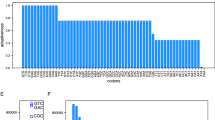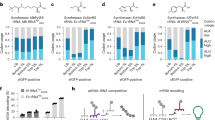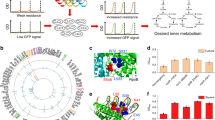Abstract
The genetic code is redundant as amino acids are encoded by synonymous codons that are unequally used.This codon usage bias (CUB) affects gene expression and cellular functions yet the underlying mechanisms have not been elucidated. We used a sequence-specific, stoichiometric model of metabolism and macromolecular synthesis for Escherichia coli K12 MG1655 to test the effect of randomly changed CUB on growth maximization under various environmental conditions. Amongst CUB mutant strains, we identified reduced growth phenotypes, which were caused by tRNA supply shortage. We propose, supported by computations and bibliomic data, that expansion of tRNA gene content or tRNA reading is a mechanism to respond to changes in CUB. Our systems biology modelling framework suggests that in order to maximize growth and to adapt to new environmental niches, CUB and tRNA content must co-evolve and provides further evidence for the mutation-selection-drift balance theory of CUB.
Similar content being viewed by others
Article PDF
Author information
Authors and Affiliations
Corresponding author
Rights and permissions
About this article
Cite this article
Thiele, I., Fleming, R., Que, R. et al. A Systems Biology Approach to the Evolution of Codon Use Pattern. Nat Prec (2011). https://doi.org/10.1038/npre.2011.6312.1
Received:
Accepted:
Published:
DOI: https://doi.org/10.1038/npre.2011.6312.1
Keywords
This article is cited by
-
Translation Comes First: Ancient and Convergent Selection of Codon Usage Bias Across Prokaryotic Genomes
Journal of Molecular Evolution (2022)
-
Reliable and efficient solution of genome-scale models of Metabolism and macromolecular Expression
Scientific Reports (2017)



